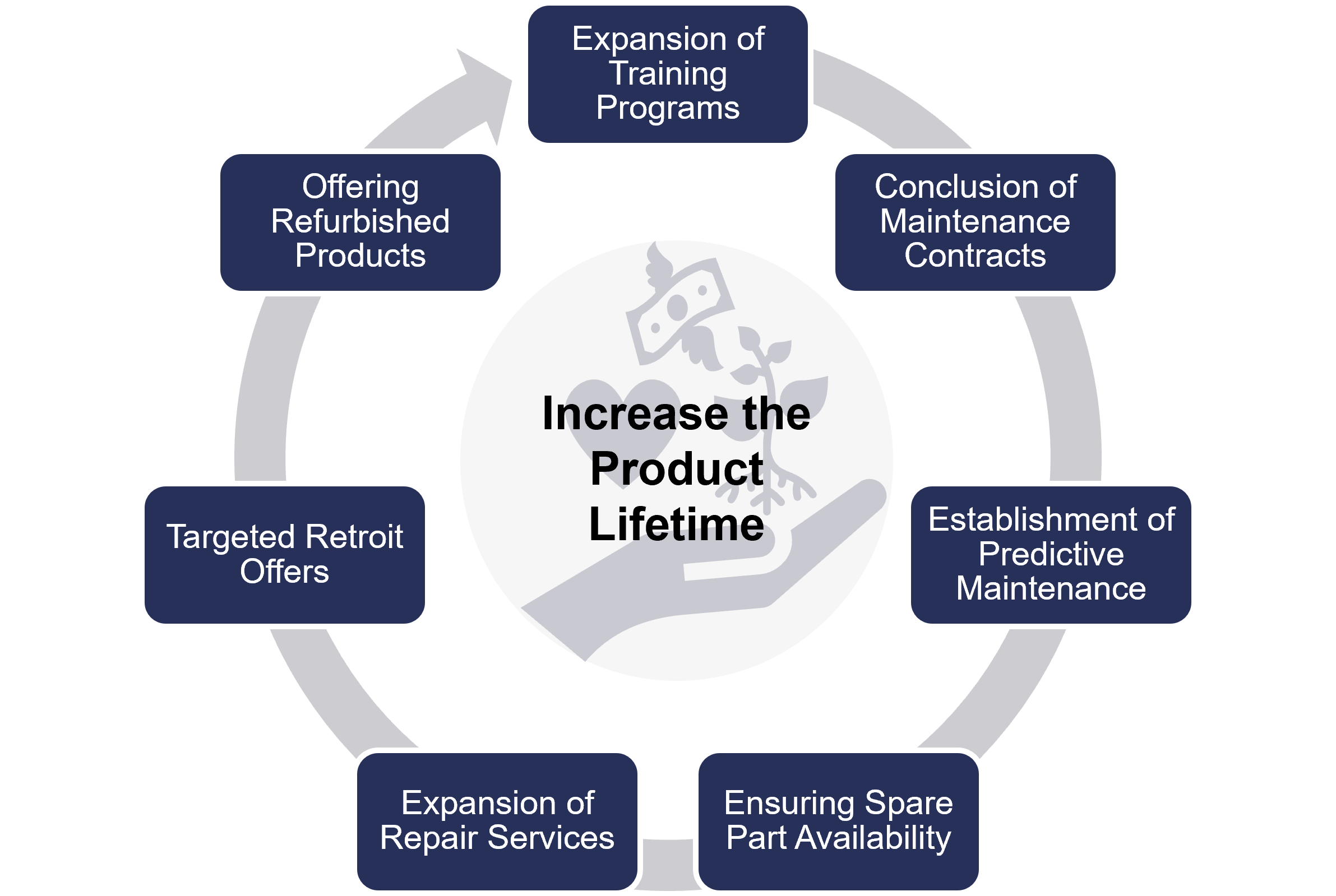More and more companies are embracing sustainability. However, comprehensive measures to increase the useful life of the products they manufacture are usually not at the top of the sustainability agenda. This is surprising, since at the same time, for a growing number of customers, the durability of products is becoming an increasingly important criterion in their purchasing decisions. An ‘old virtue’ of repairing products instead of throwing them away is also being rediscovered by more and more people and actively demanded by manufacturers. In addition, various countries are examining whether a repair index, such as the one already introduced in France (the French index uses five criteria, such as ease of disassembly and access to spare parts, to indicate the reparability of a product or device), should be implemented.
The advantages of implementing measures to increase the product service life as quickly as possible are:
- achieving a significant contribution to sustainability
- creating new potential for USPs compared to competitors
- counteracting pressure from the state
The following diagram shows a selection of possible starting points for companies in after sales to specifically extend the use of their products:

All of the above approaches can not only extend the service life, but also offer opportunities to operate these as successful business models and generate revenue from them. The focus should be less on revenue from resales and more on initiating a change towards increased revenue generation by creating additional services. This offers a unique opportunity for after-sales units to take on a driving role. The aim is to successfully establish new services for extending the service life with customers in small steps. The following examples in the area of ‘digital operating aids’ or ‘modernisation of the repair and spare parts service’ show how the above-mentioned advantages, including a more efficient design of processes, can be achieved.
Digital user assistance
For many products, correct setup/installation, use, care and maintenance are crucial to how long they can be used. For most manufacturers, the information about this can be found in small print, in brief, multilingual installation and user instructions, which can at best be downloaded as PDFs. In this way, customers could be directed to product-specific explanatory videos via a QR code on the product or on the packaging. For more complex products, online tutorials can also be offered, virtual training courses booked or even a chargeable video chat with technical support started. It is important that users also find the digital operating aids ‘fun’ to use. For example, a ‘driving test’ combined with a competition can motivate users to take a more in-depth look at the care and maintenance of the product. For products that communicate with an app, additional context-related care and maintenance instructions can be passed on to users (e.g. after a certain period of use/operation). Customers who maintain and care for their product in an exemplary manner collect points in the app for a ‘best user’ ranking.
Modernisation of the repair and spare parts service
It is surprising how little even renowned companies emphasise a positive product/brand experience for customers when it comes to repairing their products (especially when the warranty has expired) or procuring spare parts. A simple chatbot can help customers find and implement the solution independently (e.g. a link to an explanatory video on how to fix the identified problem independently or a direct shop link to a suitable repair kit). If the chatbot cannot find a solution, a video chat with a service technician can be offered to provide an initial remote diagnosis and, for example, information about the reparability and expected costs. This saves both parties a potentially costly logistical process (packing/unpacking and sending the product), which may reveal that the product was not broken at all or that a repair is not possible/too expensive.
The process of searching for and finding suitable replacement parts can also be significantly improved for most manufacturers. Instead of having to request item numbers from type plates that are difficult to find or read, customers can use image recognition or a QR code on the product to access the available replacement parts list directly and order the desired part immediately. In addition, customers with registered products can be informed about the availability of spare/wear parts after a certain period of use. This is particularly useful if the production of a spare/wear part is soon to be discontinued.
Conclusion
Extending the service life of a product goes against the goal of many companies, which is to replace the product currently in use with a more innovative one as soon as possible and to maximise profits as a result. In view of the arguments presented above, however, it makes sense for manufacturing companies to address the issue of ‘extending the service life’ as early as possible, before customers, competitors or the state force them to do so. The approaches presented show that, especially in after-sales units, there are a variety of services that can be implemented faster and more cost-effectively than product-specific approaches. It is important that these approaches are implemented in small, measurable steps. This allows successes to be celebrated, critics to be gradually convinced and new approaches to be tackled with momentum.
Read the article by SERVICETODAY on page 40/41 to find out how Stephan Haller is increasing the service life of technical products.